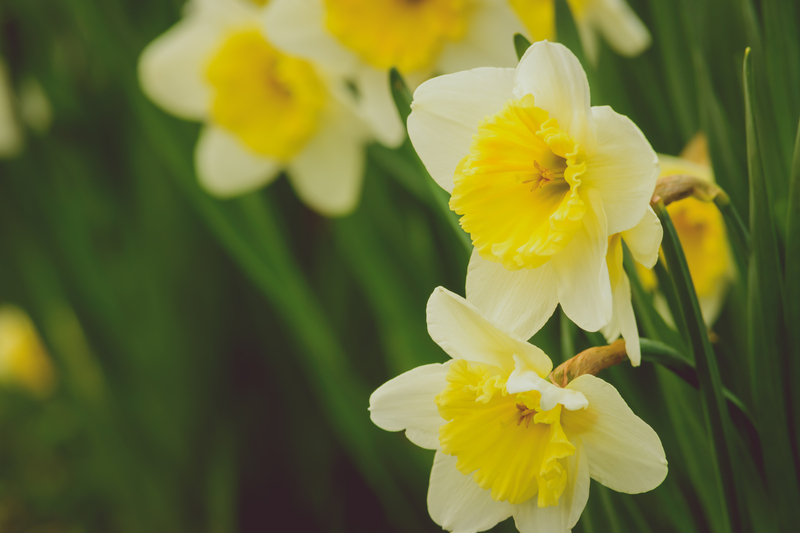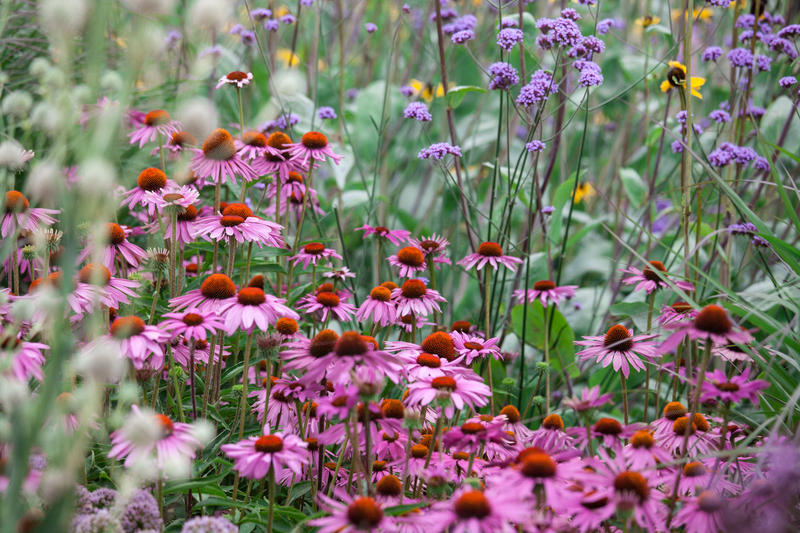Efficient Gardening: 5 Wallet-Friendly, Minimal Upkeep Approaches
Posted on 12/06/2025
Efficient Gardening: 5 Wallet-Friendly, Minimal Upkeep Approaches
In today's fast-paced world, gardening efficiently is more important than ever. Many plant lovers dream of a beautiful yard but shy away due to the perceived cost and effort. The good news? There are plenty of wallet-friendly gardening solutions that require minimal upkeep, perfect for beginners, busy homeowners, and anyone eager to save time and money. This comprehensive guide reveals five tried-and-true, low-maintenance gardening strategies that promise fruitful results without draining your bank account or schedule.
Why Choose Efficient and Budget Gardening Methods?
Gardening offers a host of benefits--stress relief, healthier food, a lovely landscape--but it can be daunting to invest lots of time and resources. Efficient gardening techniques answer this dilemma by prioritizing:
- Reduced long-term costs;
- Lower water and fertilizer usage;
- Less time spent on maintenance tasks;
- Improved plant survival rates;
- Simple projects for all skill levels.
Here are five wallet-wise, minimal-upkeep gardening approaches that make any garden manageable, productive, and gorgeous.

1. Embrace Native & Drought-Resistant Plants
Using plants that thrive naturally in your area is the single best way to maximize efficiency in your garden. Native species--trees, shrubs, perennials, and groundcovers indigenous to your local climate--require less water, fertilizer, and care than exotic varieties. These plants are already adjusted to your soil conditions and weather patterns, making them naturally robust.
Benefits of Native and Drought-Tolerant Varieties
- Saves on water and reduces your utility bills;
- Minimizes the need for pesticides and fertilizers;
- Supports local pollinators and wildlife;
- Survives seasonal extremes with little intervention.
Popular options for low-maintenance, cost-efficient gardens include lavender, echinacea, yarrow, sedum, and native grasses. For even greater savings, seek seeds from local plant societies or community swaps.
Quick Tips to Implement
- Research your USDA Hardiness Zone to match plant species with your climate;
- Choose perennial plants that return yearly, reducing replanting costs
- Mulch heavily to help retain moisture and suppress weeds;
- Group plants by watering needs for even greater efficiency.
2. Mulching: The Set-and-Forget Secret
If you want an efficient and affordable gardening technique, mulching should be at the top of your list. Mulch--be it leaf litter, shredded bark, grass clippings, or compost--acts as an insulating blanket for your plants and soil. Beyond dramatically reducing the need for weeding and watering, mulch recycles natural waste and reduces garden chores.
Major Benefits of Mulching
- Keeps soil moist longer, reducing irrigation needs;
- Suppresses weed growth, cutting back on labor and herbicide costs;
- Feeds soil as it decomposes--free fertilizer!
- Protects roots from temperature swings, increasing plant survival rates.
Best practice: Aim for a 2- to 4-inch layer of organic mulch. This not only insulates your soil but also provides a polished look to your landscaping. If you're on a tight budget, create your own mulch by collecting yard trimmings or shredded newspaper.
Pro Tip: Avoid piling mulch directly against plant stems or tree trunks to prevent rot.
3. Smart Watering: Drip & Soaker Systems
One of the priciest (and most labor-intensive) aspects of gardening can be watering. For cost-savvy and efficient gardening, move beyond the hose and sprinkler: install a basic drip irrigation or soaker hose system to deliver water straight to your plant roots.
Why Drip Works Wonders
- Dramatically reduces water wastage by targeting only plant roots;
- Prevents soil erosion and keeps foliage dry, warding off disease;
- Timers offer completely hands-off watering;
- Adaptable to both containers and garden beds.
Even basic systems can save hundreds of gallons (and dollars) per year. Use recycled plastic bottles with holes punched in them for a DIY, no-cost alternative--just bury near your plants and fill as needed.
How to Install Simple Drip or Soaker Hoses
- Lay hoses along the base of plants;
- Cover with mulch for extra efficiency;
- Use a faucet timer to automate daily watering (less than $20);
- Check regularly for clogs and leaks.
Not only does this method save you time, but it also prevents over-watering--a leading cause of root rot and plant loss in traditional gardens.
4. Go Vertical with Space-Saving Garden Structures
Limited on space (or effort)? Vertical gardening isn't just for city balconies--it's a clever way to maximize productivity while minimizing labor and expense. Whether you opt for a simple trellis, living wall, or upcycled container system, vertical gardens reduce weeding, conserve water, and often produce higher yields in less time.
Key Advantages of Vertical Gardening
- Utilizes unused vertical space--perfect for patios and small yards;
- Improves air circulation for healthier plants;
- Less bending means it's easier on your back;
- Often keeps crops out of reach of many pests.
For an extra cost-saving touch, build your vertical planters from recycled pallets, old bookshelves, or hanging shoe organizers. Plant fast-growing climbers like peas, pole beans, cucumbers, strawberries, or small herbs to get the most from minimal square footage with even less upkeep.
Simple Steps to Start a Vertical Garden
- Choose a sturdy, sunlit wall or fence;
- Install your chosen support structure or containers;
- Fill with high-quality potting mix and compost;
- Plant and water as usual--then let gravity and nature do the rest!
Vertical gardens are also easier to replant and revamp each season, saving time and money each year.
5. Composting: Nature's Best Budget Fertilizer
Across all efficient gardening tips, nothing stretches your dollar and minimizes work quite like composting. By converting kitchen scraps, leaves, and yard debris into rich, plant-loving humus, you'll reduce landfill waste--while enriching your soil for free.
Composting Benefits for Minimal Upkeep Gardening
- Provides a free and constant source of fertilizer;
- Improves soil texture, allowing plants to thrive with less watering and fewer supplements;
- Reduces waste and disposal costs;
- Decreases the need for expensive soil amendments;
- Enables community sharing of excess compost.
You don't need a fancy bin or large yard to get started. A $20 tumbler, a simple DIY pallet box, or a corner of yard space will do. Just avoid meat, dairy, and oily foods; stick to fruit, veg, egg shells, yard clippings, and coffee grounds. Turn your bin every 1-2 weeks to help materials decompose quickly.
How to Start Composting on a Budget
- Collect compostable materials in a pail or bin;
- Layer brown (dry leaves, cardboard) and green (food scraps, grass) materials;
- Keep moist but not soggy, and turn regularly;
- Use finished compost to mulch beds, amend soil, or create potting mixtures;
- Share excess with neighbors--or start a community composting program.

Extra Wallet-Friendly, Low-Maintenance Gardening Tips
- Start from seeds instead of mature plants for a fraction of the cost;
- Share tools, plants, and knowledge at community gardens or local swaps;
- Repurpose household containers for seed starting or decorative planters;
- Practice "no-dig" or "lasagna" gardening to reduce tilling;
- Automate what you can with inexpensive timers, sensor lights, or weather-based watering systems.
Remember: A low-cost, efficient garden is achieved not by cutting corners, but by making smart, sustainable choices right from the start.
Conclusion: Reap the Rewards of Efficient, Budget Gardening
Whether your goal is to cultivate a vibrant flower bed, harvest your own food, or simply beautify a small yard, efficient gardening methods deliver big results with minimal cost and ongoing effort. By choosing native plants, mulching smartly, upgrading to drip irrigation, going vertical, and composting, you'll save money, time, and labor year after year.
Embracing wallet-friendly, low-maintenance approaches is both practical and rewarding, ensuring anyone can enjoy the benefits and beauty of gardening--no matter the budget or experience level. As you embark on your efficient gardening journey, remember: small investments in smart strategies pay off for years, giving you more time to enjoy the fruits, flowers, and serenity your garden brings.
Start today--your thriving, easy-care, and affordable garden awaits!

